Court Filing Reinvented
From paper-based complexity to seamless digital experiences
Client
Ministry of Justice and Solicitor General, and Digital Innovation Office, Government of Alberta
Role
Front-end Designer
(UX + Service Design)
Description
The Surrogate Filing Digital Service is a streamlined web application that enables Albertans to probate or administer a deceased person’s estate. It features digital capabilities such as: online data entry, digital workflows, and data repository which enhance overall usability for applicants and court staff.
The outcome of this project lays the groundwork for Justice Digital, a Digital Innovation Office (DIO) and Ministry of Justice and Solicitor General (JSG) initiative, to re-imagine more usable, efficient, and cost effective court service delivery across various areas of law and court.
Responsibilities
Work collaboratively with a cross-functional team
Develop various UX and Service Design deliverables and artifacts, such as storyboards, wireflows, journeymaps, service blueprints
Build-ready prototyping and mock ups for development
Clickable prototypes for testing with users
Information design to communicate findings
Reflecting on 1 year live
Total process time
cut from 6-8 mo to
17 days average
20,000 citizens impacted (applicants, beneficiaries or potential claimants)
Clerk processing times reduced by 60-70%
6800 applications
(~80% of all apps) submitted to the Court
~3000 accounts for lawyers, assistants, clerks and Justices
A collaborative process with a group of fully engaged stakeholders, which combined digital, policy and frontline service expertise was critical to the success of the project. We were fortunate to be part of legislative change that cleared the path for new, digital methods for certifying documents, completing legal service, and creating official court records.
This project represents a major step forward in the effort to digitize court filing. It lays the groundwork for transitioning other Court services into the digital space, and acts as an example of how the public service can provide better experiences for all citizens.
PROCESS WORK
UX
SERVICE
DESIGN ARTIFACTS
PROCESS WORK UX SERVICE DESIGN ARTIFACTS

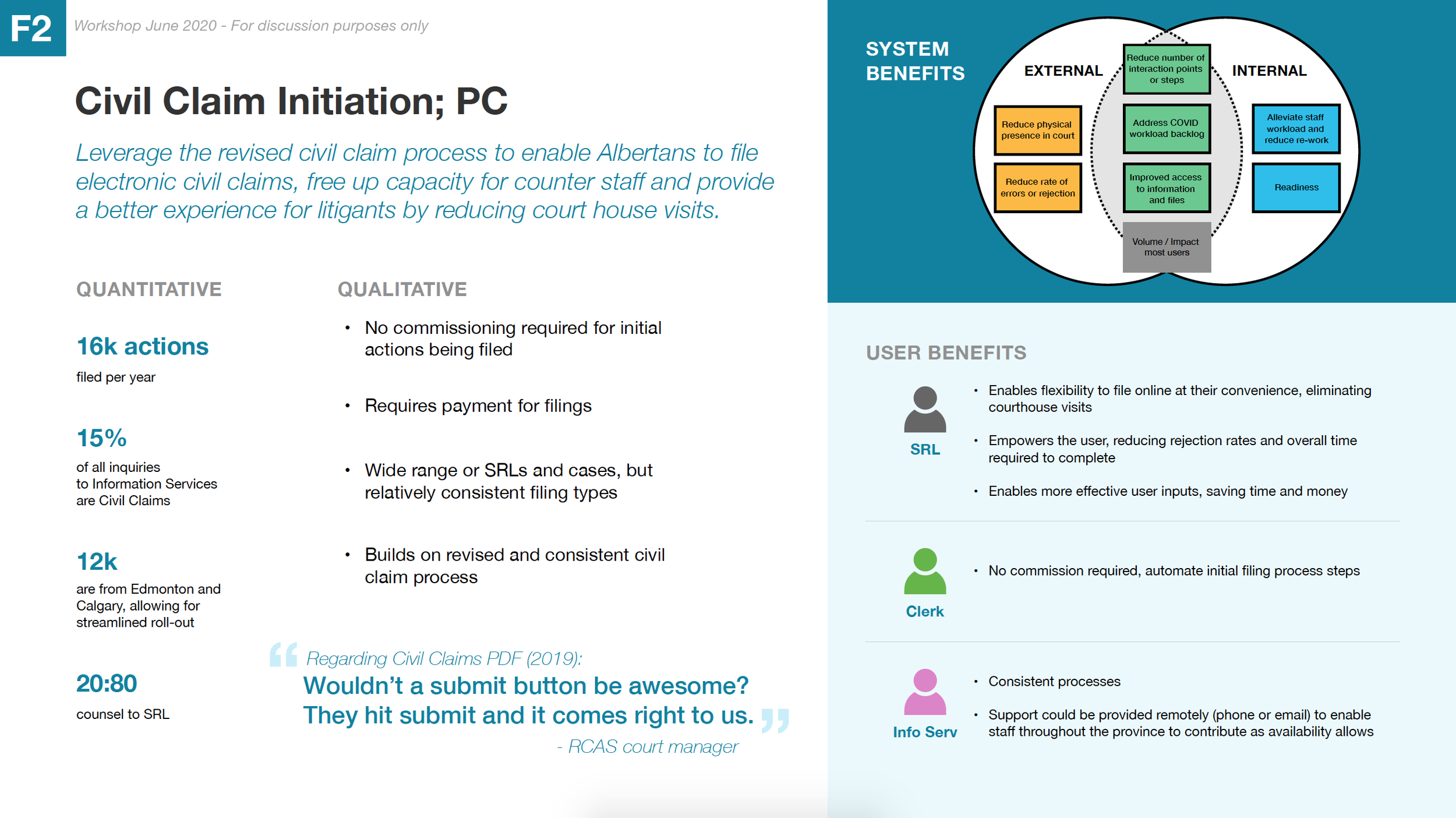
Key Opportunity Areas: a series of diagrams that synthesize research findings (qualitative and quantitative), common goals and design principles collectively identified by design team, and criteria for problem selection for use in extended leadership discussions and workshops.
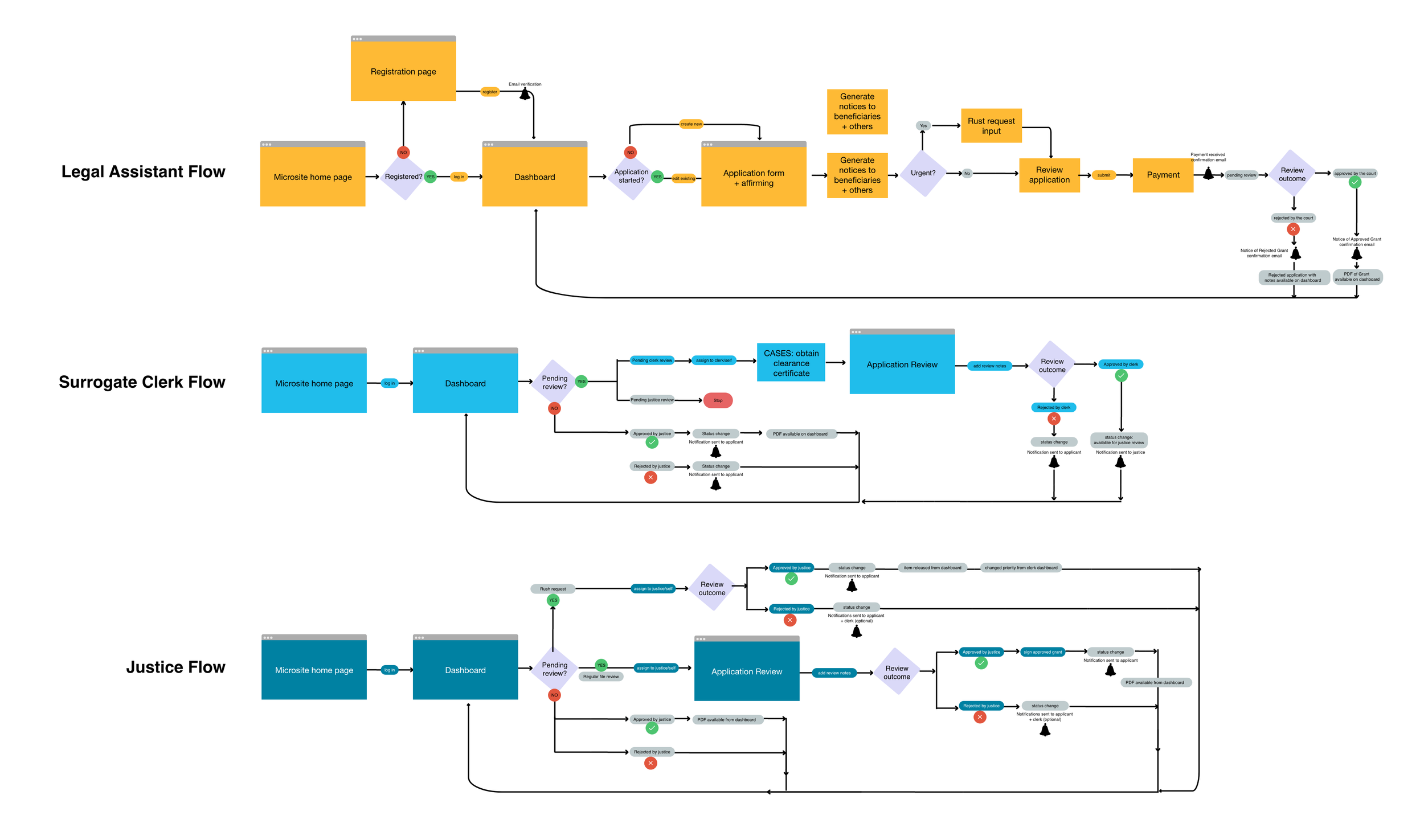
Role-based User Wireflows: to illustrate the proposed process steps andinteractions for various user roles.

Detailed wireflow: end-to-end service including multiple user roles, process steps, file states, dependencies and various system integrations.

Surrogate Filing Current-state Storyboard: illustrates physical interactions, pain points and cumbersome manual steps involved with current filing process to enable decisions makers to make effective, considered decisions.

Various UX deliverables: developed to visualize qualitative research findings, insights, criteria, etc, which are used to facilitate effective discussions and workshop sessions with extended leadership and other key stakeholders.

Surrogate Filing Current-state Journeymap: end-to-end service journey map / service blueprint, including process steps, interactions with various user roles, pain points and opportunities.

Facilitating Weekly workshops with key stakeholders

Workshopping a workflow for a new feature

Service Design artifact: developed to visualize qualitative research findings and used to facilitate effective discussions and workshop sessions with extended leadership and other key stakeholders.

Sprint Retrospectives

Various UX deliverables: developed to visualize qualitative research findings, insights, criteria, etc, which are used to facilitate effective discussions and workshop sessions with extended leadership and other key stakeholders.
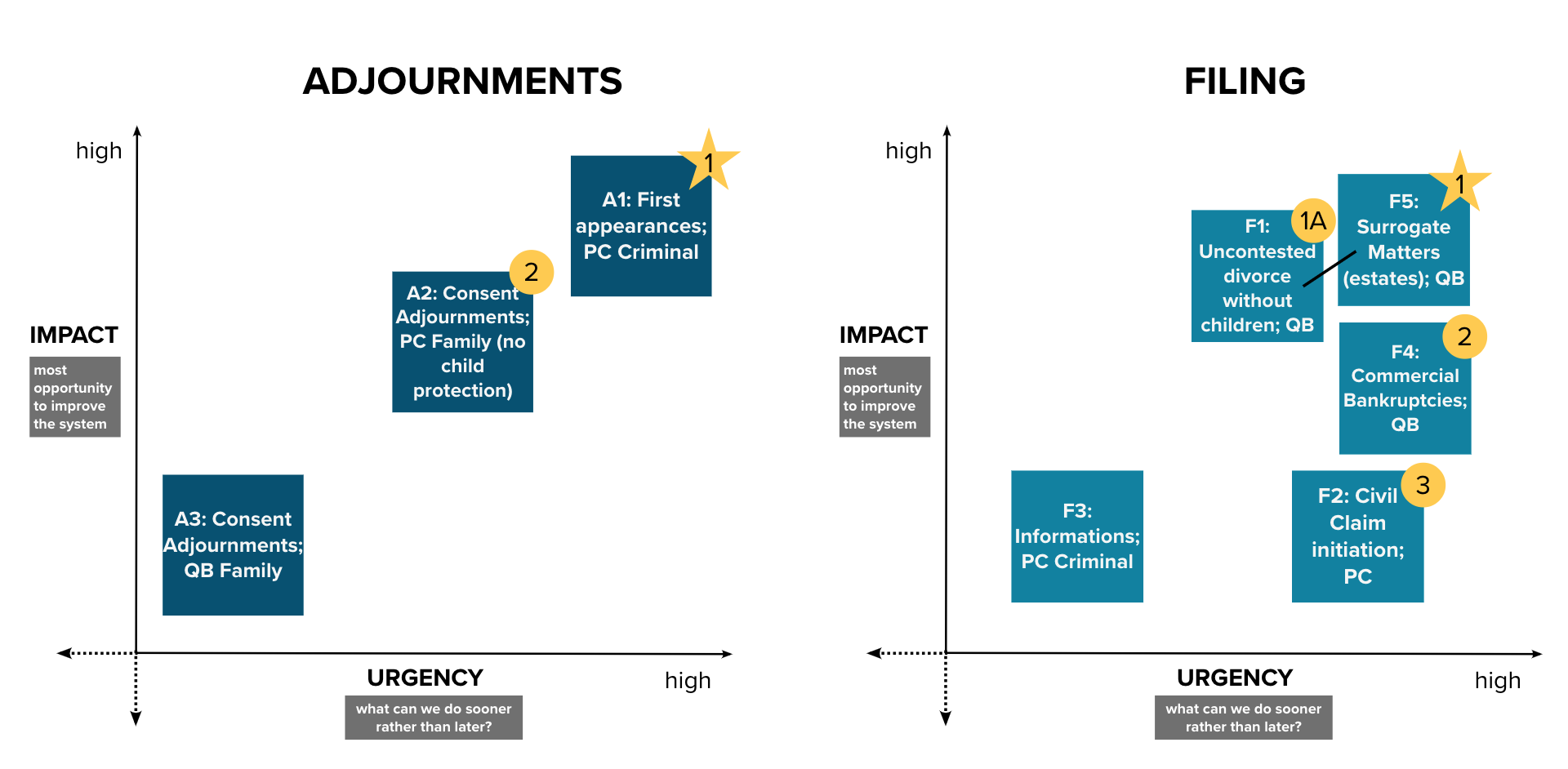
Various UX deliverables: developed to visualize qualitative research findings, insights, criteria, etc, which are used to facilitate effective discussions and workshop sessions with extended leadership and other key stakeholders.
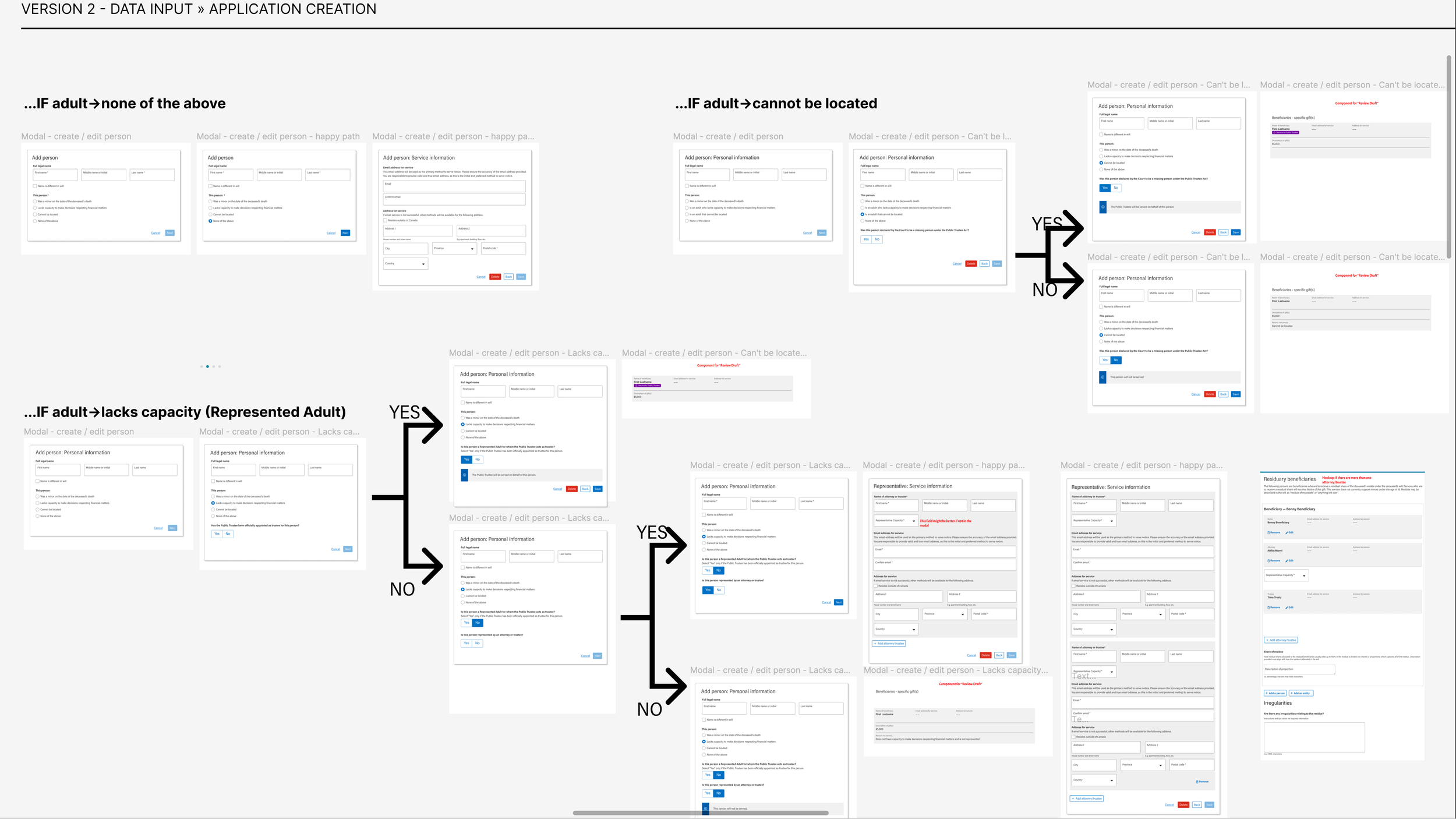
Iterating on user interactions

Improving the visual design of information to be reviewed by clerks, making the review process more streamlined and scannable.

Iterating on state change diagrams

Visually communicating process flows to facilitate decision making with stakeholders.

Contextual Inquiry: a clerk enters information from a paper application into a legacy database.

Team "whiteboarding" session
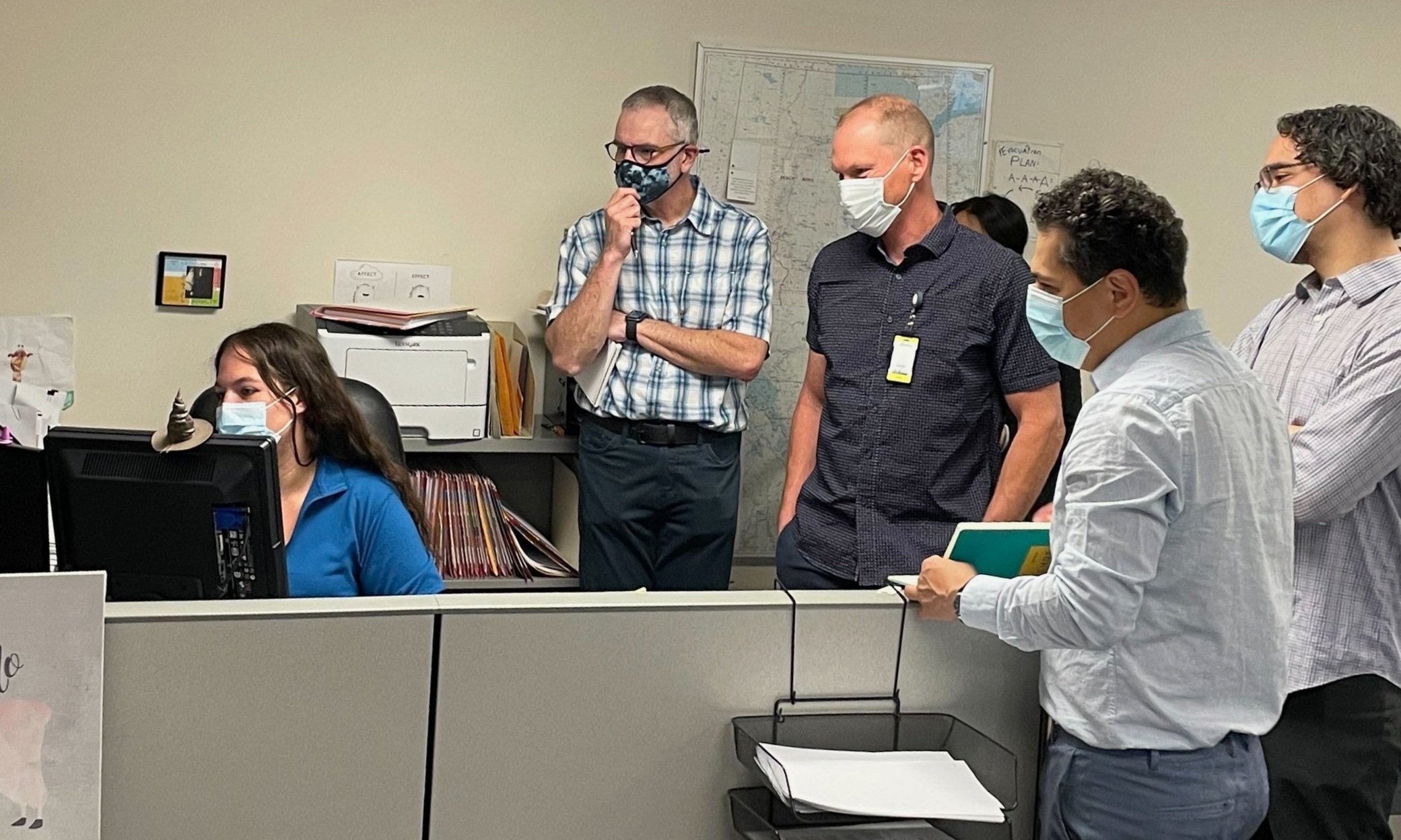
Contextual Inquiry: observing the clerk review process
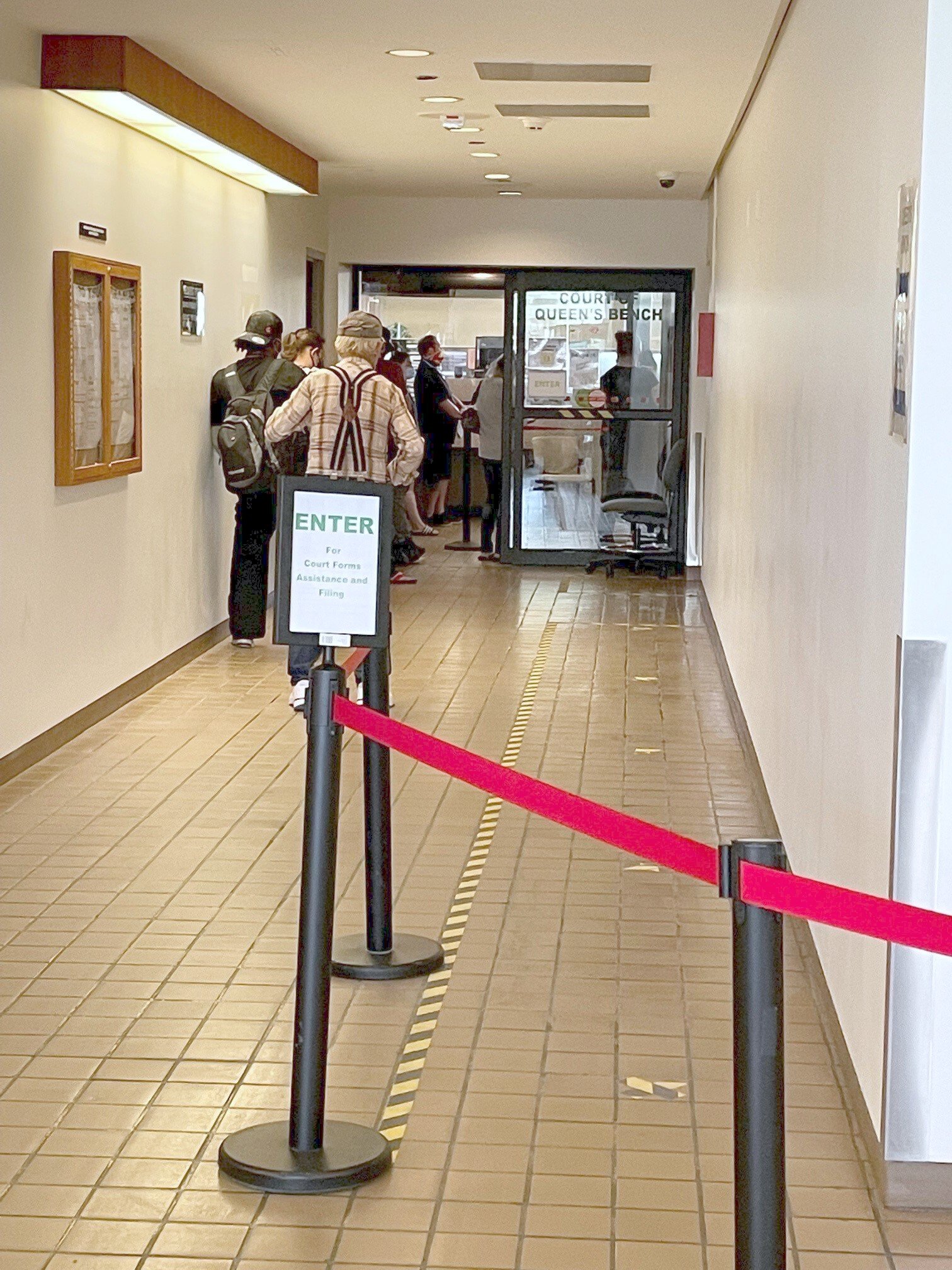
Observational Research: people beginning lining up to figure out how to file their applications.

Contextual Inquiry: a paper-based process involves cumbersome manual steps

Contextual Inquiry: a paper process requires "status updates" in the form of manual stamps

Contextual Inquiry: a paper process that is organized into different system statuses.

Contextual Inquiry: a single file can contain hundreds of pages of information.

Panel Discussion: Transformation in Government. UX Camp 2023.

Team Photo: the first Grant of Probate (an official court document) generated by the new end-to-end, fully digital service.

Paper files that correspond to digital files








